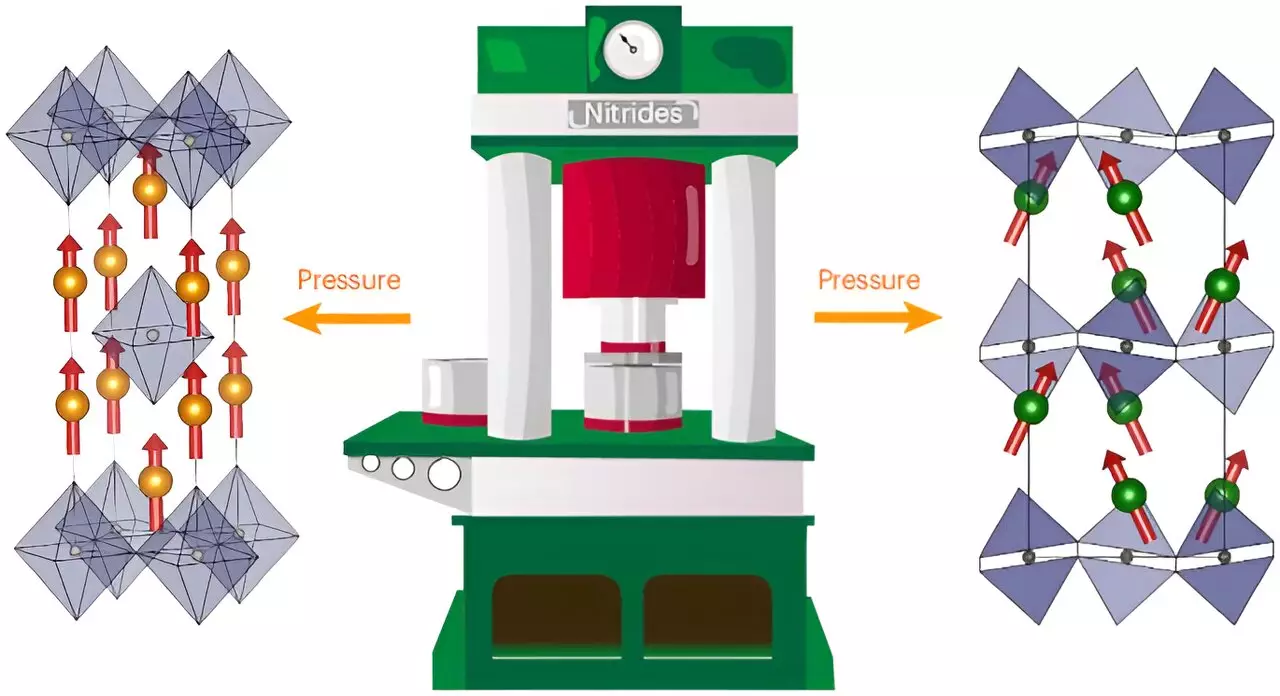Ruddlesden-Popper compounds have long fascinated chemists and materials scientists due to their unique layered structures. This intriguing class of materials holds enormous promise for diverse applications, ranging from superconductors to catalysts, and even within the realm of photovoltaics. Traditionally, researchers have worked extensively with halides and oxides of the Ruddlesden-Popper structure; however, the scientific community has been impeded by the lack of nitride variants. This gap has now been addressed thanks to pioneering efforts from Dr. Simon Kloß and his team at the Department of Chemistry, LMU.
The Challenge of Nitride Synthesis
The creation of Ruddlesden-Popper nitrides presented formidable challenges, primarily due to nitrogen’s inherent stability in its diatomic molecular form (N2) and its low electron affinity. These traits rendered the fabrication of nitrogen-rich compounds notoriously difficult. Nevertheless, the breakthrough achieved by Kloß and his colleagues relied on a novel synthetic approach that utilizes high-pressure techniques. By subjecting their samples to extreme pressures of up to 8 gigapascals (equivalent to about 80,000 bars), they opened up new avenues to synthesize these elusive compounds. This shift in methodology not only underscores the potential of accessing new materials but also illustrates the ingenuity required to navigate the complexities of chemical synthesis.
New Discoveries in Ruddlesden-Popper Nitrides
The team’s successful synthesis resulted in several promising nitride compounds, including cerium-tantalum nitride (Ce2TaN4) and praseodymium- and neodymium-rhenium nitrides (Ln2ReN4). These compounds are not just noteworthy for their novelty; they offer a fascinating spectrum of structural, electronic, and magnetic properties that could herald a new chapter in material science. Of particular interest are the magnetic characteristics exhibited by the praseodymium and neodymium compounds. The neodymium variant stands out as a hard ferromagnet, marked by its irreversible magnetic behavior—a property that could have significant implications for data storage and spintronic applications.
Prospective Applications and Future Research
The cerium-tantalum nitride (Ce2TaN4) adds to this excitement by demonstrating semiconductor properties that are promising for energy conversion technologies and potential ferroelectric applications. Such diverse functionalities highlight not only the immediate usefulness of these materials but also the expansive possibilities for future research. The synthetic strategy developed by Kloß and his team could provide a pathway for exploring additional Ruddlesden-Popper nitride compounds and their derivatives, leading to a burgeoning field of study ripe for exploration.
A Leap into the Future of Material Science
What makes this discovery particularly compelling is the implication of systematic investigation into Ruddlesden-Popper nitrides. The combination of their novel properties and the unique synthesis approach sets a foundation for new technology in energy materials, magnetics, and beyond. As researchers dive deeper into this territory, the potential for innovation appears boundless, hinting that the frontiers of material science are about to be redrawn. Dr. Kloß’s research marks not merely a step but a leap towards a comprehensive understanding of nitride-derived materials, offering a thrilling glimpse into the future of advanced materials technology.

